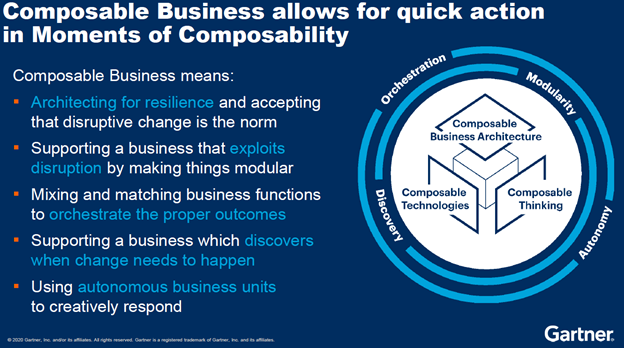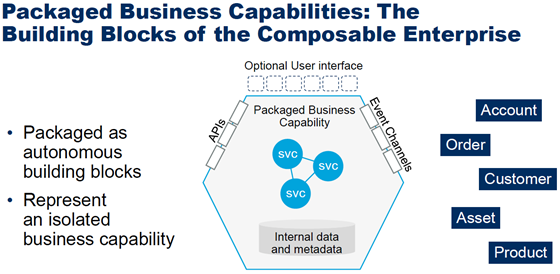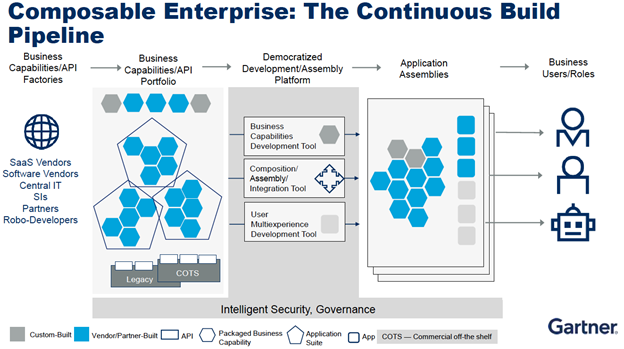Read the post in プレスリリースを読む 보도 자료 읽기
Despite being a virtual event, in October Gartner’s annual North American Symposium drew over 23,000 registrants and likely had impact on more CIOs and IT Leaders than any prior Symposium.
Each year, Gartner introduces a new theme that carries a common conversation across keynotes, track sessions, and 1:1 analyst conversations, and influences Gartner’s research for the following 12 months and sometimes even longer. The theme this year was Composable Business. Has a nice ring to it, don’t you think? Personally, I like the fact that it’s pretty self-explanatory, unlike 2018’s theme ContinousNext and 2019’s TechQuilibrium (oh well, you can’t bat 1000 every season can you?)
So what is Composable Business?
I’m no Gartner analyst, but I’d like to explain how I interpreted Composable Business and what it means to our business.
Given turmoil organizations and CIOs have been facing of late – COVID-19 and its many impacts, coupled with societal and environmental/climate disruption –disruption is the new name of the game. Organizations have to not just plan for but embrace continuous disruption and many different futures. This is where the Composable Business comes into play: “a Composable Business is architected for real-time adaptability and resilience in the face of uncertainty.”1.
The building blocks of composable business which are composable thinking, composable business architecture, and composable technologies; applied with the principles of modularity, orchestration, discovery and autonomy. I thought this was best captured in this slide from the symposium opening keynote1:

Source: Gartner Symposium 2020 Opening Keynote: Seize the Moment to Compose a Reslient Future”, 19 Oct 2020, Tina Nunno, Daryl Plummer, Don Scheibenreif
When it comes down to brass tacks, Gartner characterized it best as: “Success and innovation requires that the capabilities delivered by applications are modular, rapidly and safely assembled, disassembled and recomposed as business, customer and market needs shift.”2
What does this have to do with Event-Driven Architecture?
Fortunately, Gartner provides a recipe for building composable business applications, and the main ingredients are what Gartner calls Packaged Business Capabilities (PBCs), i.e. “encapsulated software components that represent well-defined business capability, recognized as such by a business user.”2
These could be as course or granular as needed and come from application vendors; be built as interfaces to legacy systems; or be completely custom created. PBCs could encapsulate the function and data of a business object such as a bank account, product or purchase order, or they could encapsulate a process such as account draft approval or customer credit rating lookup.

Source: Gartner AADI Summit “Navigate the Strategic Roadmap to the Future of Applications”, 2 Mar 2020, Paul Vincent
You can stitch together multiple PBCs, possibly front-ended with a user interface, to form a composable application. In turn, these composable applications can be bundled to form a business capabilities portfolio.
The “glue” that stitches these PBCs together can be APIs or Event Channels. You can control and coordinate Event Channels, also known as Event Streams or just plain events/messages, with an event broker like Solace PubSub+ Event Broker to integrate the PBCs either via data exchange or direct invocation as in a process flow.
The deliberate use of event channels/streams to choreograph application integration and process flow is a classic use of event-driven architecture (EDA) and has long been seen as a way of making applications more real-time, agile, and resilient.
Gartner envisions that enterprises will use an application composition platform made of professional and low-code composition tools that both IT and business users can collaborate on to assemble (and reassemble) their application experiences.

Source: Gartner AADI Summit “Navigate the Strategic Roadmap to the Future of Applications”, 2 Mar 2020, Paul Vincent
Unlike traditional applications, the composed application experience can be recomposed on demand in the event that the responsibilities or best practices applicable to the user or role change.
Gartner predicts that by 2023, 60% of organizations will seek composability in new application investments, and in that same timeframe organizations that have adopted an intelligent composable approach will outpace their competition by 80% in the speed of new feature implementation2. So get comfortable with these terms, as we’ll hear about them more throughout 2021 I expect.
If you are a Gartner client, you can read more about this in their report “Use Gartner’s Reference Model to Deliver Intelligent Composable Business Applications”.
Footnotes:
1 – Source: Gartner Symposium 2020 Opening Keynote: Seize the Moment to Compose a Reslient Future”, 19 Oct 2020, Tina Nunno, Daryl Plummer, Don Scheibenreif
2 – Source: Gartner “Use Gartner’s Reference Model to Deliver Intelligent Composable Business Applications”, 14 Oct 2020, Yefim Natis, Rita Sallam, Nick Huedecker, Anthony Mullen, Benoit Lheureux, Mark Beyer, Dennis Gaughan, Gene Alvarez
3 – Source: Gartner AADI Summit “Navigate the Strategic Roadmap to the Future of Applications”, 2 Mar 2020, Paul Vincent
Explore other posts from categories: Business | For Architects

 Roger Sabourin
Roger Sabourin
